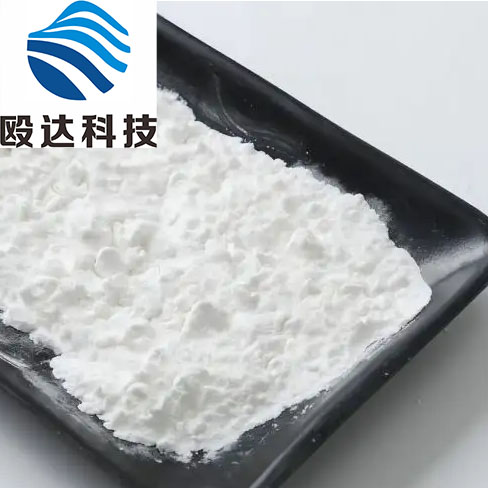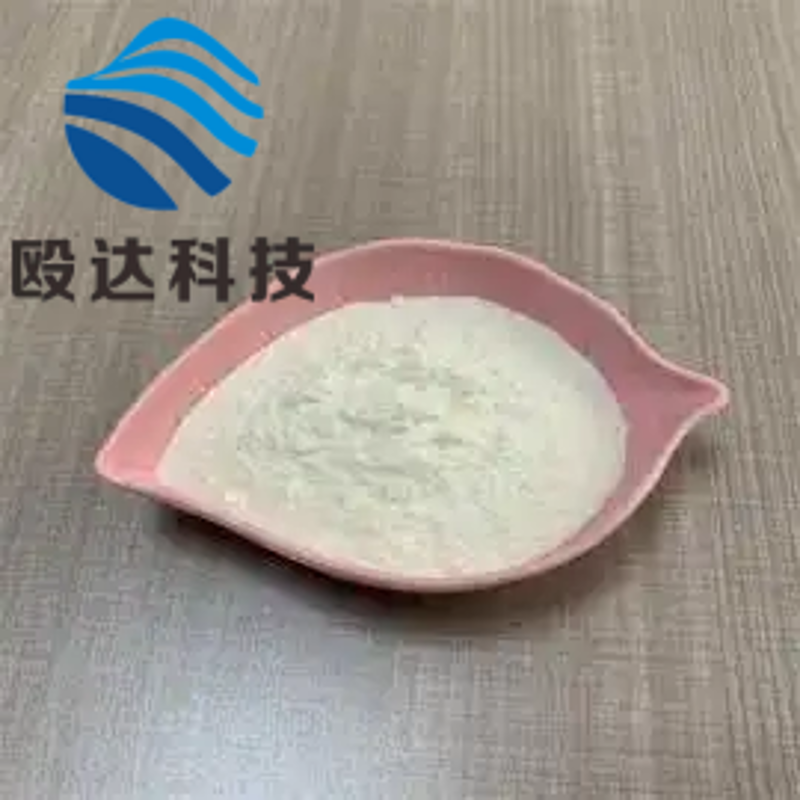-
Categories
-
Pharmaceutical Intermediates
-
Active Pharmaceutical Ingredients
-
Food Additives
- Industrial Coatings
- Agrochemicals
- Dyes and Pigments
- Surfactant
- Flavors and Fragrances
- Chemical Reagents
- Catalyst and Auxiliary
- Natural Products
- Inorganic Chemistry
-
Organic Chemistry
-
Biochemical Engineering
- Analytical Chemistry
- Cosmetic Ingredient
-
Pharmaceutical Intermediates
Promotion
ECHEMI Mall
Wholesale
Weekly Price
Exhibition
News
-
Trade Service
Can the fat in the belly be removed in a targeted manner? Today I want to tell you: Maybe it can! Recently, a research team from the famous Portuguese research institution Champalimaud Centre for the Unknown published an important research result in the top journal "Nature"[1]
.
They claim to have found a neural pathway that links brain activity with visceral fat burning.
Through this neural pathway, the brain can send signals to mesenchymal stem cells (MSC) in visceral fat, allowing MSC to activate specific immune cells in visceral fat.
, Activate fat cells to burn fat
.
It is understood that this is the first time that the brain regulates fat burning pathways through immune cells
.
This discovery is expected to bring new therapies to patients with obesity and related metabolic diseases
.
A screenshot of the paper's homepage is harmful to the human body.
I'm afraid we don't need to repeat it
.
If you want to select the most toxic fat in humans, then visceral fat must be a well-deserved "king
.
"
Visceral fat increases the risk of metabolic diseases such as type 2 diabetes, not to mention, only the research we have introduced, visceral fat not only accelerates the decline of cognitive function [2], but also promotes normal epithelial cells to become cancerous [3] ], even with the shortened survival time of patients with lung cancer [4]
.
In fact, no one wants visceral fat
.
Unfortunately, visceral fat is not only easy to grow, high-fat and high-sugar diet + sitting for a long time, the abdomen rises in minutes; visceral fat is not easy to lose, even if it is fasted every other day, it will not be lost [5]
.
How can this be good
.
The team of Dr.
Henrique Veiga-Fernandes is also very concerned about this problem.
Their solution is to find the body's natural mechanism to break down visceral fat, and then find a way to achieve it clinically
.
In fact, previous studies have shown that the activity of sympathetic neurons can drive the breakdown of fat [6]
.
Studies have also found that type 2 innate lymphocytes (ILC2s) regulate the metabolism of visceral adipose tissue through type 2 innate cytokines and methionine enkephalin (Met-Enk) [7-9]
.
Is it possible that the nervous system cooperates with the immune system to regulate fat metabolism? It's really possible
.
After all, previous studies have found that the nervous system and the immune system cooperate to regulate inflammation [10-13]
.
On the basis of the above research results, the Veiga-Fernandes team put forward their hypothesis: the nervous system regulates the metabolism of visceral fat through ILC2s
.
To prove this hypothesis, Veiga-Fernandes and his colleagues conducted research around the main white visceral fat depots in mice-gonadal adipose tissue (GAT)
.
Preliminary studies have found that there is indeed a dense network of sympathetic neuron fibers in the adipose tissue of the gonadal glands
.
The sympathetic nerve (red) in GAT selectively eliminates sympathetic neurons and leads to impaired ILC2 activity, while Clenbuterol activates the β2-adrenergic receptor (ADRB2) downstream of neurons, which leads to gonadal fat The cytokine released by ILC2 in the tissue increased
.
It is not difficult to see that the relationship between the nervous system and the innate immune cells ILC2 is indeed very close, and the interaction between the two is related to β2-adrenergic receptors
.
So how exactly do sympathetic neurons regulate ILC2? Veiga-Fernandes and his colleagues first deleted the gene Adrb2, which encodes β2-adrenergic receptors, in mouse lymphocytes.
They were surprised: ILC2, the immune cell, was not affected
.
Then there is one possibility left
.
Sympathetic neurons do not directly interact with immune cells ILC2, but indirectly interact through another "middleman" that expresses β2-adrenergic receptors
.
Who is that "middleman"? After analyzing the gene expression of various cells in the gonadal adipose tissue, mesenchymal stem cells (MSCs) surfaced
.
The gene knockout results also proved the identity of the "middleman" of mesenchymal stem cells
.
And it is worth noting that the Veiga-Fernandes team also found that mesenchymal stem cells are very close to sympathetic axons
.
The close contact between mesenchymal stem cells (red) and sympathetic nerves (green) indicates that the interaction between sympathetic nerves and mesenchymal stem cells regulates the immune cells ILC2
.
After this relationship chain is clarified, the subsequent molecular mechanisms will be much easier to study
.
In subsequent research, the Veiga-Fernandes team discovered the specific mechanism
.
It turns out that the β2-adrenergic receptors on the surface of mesenchymal stem cells will promote the production and secretion of glial cell-derived neurotrophic factor (GDNF) by sympathetic neurons after receiving signals released by sympathetic neurons
.
Then GDNF binds to the receptor tyrosine kinase RET on the surface of immune cells ILC2, activates immune cells ILC2, releases IL-5, IL-13 and methionine enkephalin, and promotes fat cells to burn fat
.
Veiga-Fernandes and his colleagues also verified the strength of this pathway in mice.
They found that enhancing the RET function of immune cells ILC2 can make mice eat a high-fat diet without getting fat
.
Mouse fat cells with enhanced RET function (right) are smaller.
From this point of view, the path of sympathetic nerve → mesenchymal stem cell → immune cell ILC2 does have a strong potential for reducing fat
.
However, in the view of the Veiga-Fernandes team, this path is still incomplete
.
They also want to know which part of the brain of the highest command center issued the instructions to regulate visceral fat metabolism
.
In order to find the boss behind the scenes, Veiga-Fernandes used eighteen martial arts to locate the headquarters in the paraventricular nucleus (PVH) of the hypothalamus
.
Complete mechanism diagram So far, this complete nerve-immune circuit is completely opened up.
This is the first time that the brain has been discovered to regulate fat burning pathways through immune cells
.
It is understood that the Veiga-Fernandes team wants to advance this discovery to the clinic, to combat visceral fat and achieve the purpose of treating metabolic diseases
.
At present, the relevant company has been established, we just need to wait for good news
.
However, in my opinion, there is a more interesting question worth looking forward to: What behavior makes the paraventricular nucleus of the hypothalamus give the command to burn visceral fat? Is it a specific food? sports? Or other external stimuli? I hope that scientists will figure out this problem as soon as possible.
After all, natural weight loss is the most anticipated
.
In the new course of Singularity, we used a 10-lecture system to sort out the 20-year history of advanced lung cancer treatment
.
A detailed inventory of the latest developments in targeted therapy has also fully demonstrated the vitality of rare target research
.
Of course, immunotherapy is also a top priority.
We will take you once again to insight into the in-depth mechanism of immunotherapy, go deep into the forefront of immunotherapy, explore treatment options for the era of chemotherapy-free, and witness the achievements of adjuvant and neoadjuvant therapy.
.
In addition, we will also gaze with you on the complex biomarker research and explore the unlimited potential of new targets for immunotherapy
.
Of course, depth does not mean obscurity, and complexity does not mean complicated
.
We have tried our best to integrate these complex knowledge points into superb audio courses, so that you can listen easily, smoothly, and not too big, so that this knowledge can be quickly integrated into our cognitive system and become the soil for the next step
.
After talking for a long time, the original price of such a good course is only 39.
9 yuan, and the certified purchase only costs 9.
9 yuan, which is only half a cup of milk tea! Now that you see this, scan the QR code below immediately, and the purchase sounds like it! References: [1].
Cardoso F, Klein Wolterink RGJ, Godinho-Silva C, et al.
Neuro-mesenchymal units control ILC2 and obesity via a brain-adipose circuit.
Nature.
2021;10.
1038/s41586-021-03830-7 .
doi:10.
1038/s41586-021-03830-7[2].
Klinedinst BS, Pappas C, Le S, et al.
Aging-related changes in fluid intelligence, muscle and adipose mass, and sex-specific immunologic mediation: A longitudinal UK Biobank study.
Brain Behav Immun.
2019;82:396-405.
doi:10.
1016/j.
bbi.
2019.
09.
008[3].
Chakraborty D, Benham V, Bullard B, et al.
Fibroblast growth factor receptor is a mechanistic link between visceral adiposity and cancer.
Oncogene.
2017;36(48):6668-6679.
doi:10.
1038/onc.
2017.
278[4].
Barbi J, Patnaik SK, Pabla S, et al.







